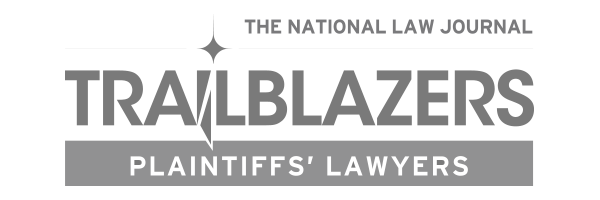Punitive Damages Strategies
7 Punitive Damages Strategy
Robert B. Carey, Stuart M. Paynter, and Celeste H.G. Boyd
When Big Pharma places profits over safety, know how to empower jurors to punish these corporations and deter future misconduct.
Big Pharma views punitive damages as a cost of doing business—but your goal is to get juries to show those companies what happens when they prioritize their bottom lines over the risks to patients and consumers. With a well-planned strategy, you can help jurors reach a meaningful punitive damages award.
1 – Be industry specific.
Tailor your approach to the pharmaceutical defendant by using a regulatory or industry expert to explain the specific duties that similarly situated companies have. Jurors assume all pharmaceutical companies must act safely, which helps when establishing liability. But to get punitive damages, you should identify and explain the precise duties at play and present an expert opinion that the defendant violated them.
Jurors might understand, for example, that doctors working for a pharmaceutical company have duties to report problems with the company’s drugs. But they may not realize that those duties extend beyond doctors and that FDA regulations governing adverse event reporting can apply to everyone working for that company, from the CEO to an accountant.1 Make sure jurors understand that anyone at the company aware of information suggesting that a medical device or drug has been a factor in a serious injury or death has FDA reporting responsibilities.
The duties at issue in your case may derive from FDA regulations, industry standards, or broader quality engineering best practices. Testimony or internal documents showing that the defendant acknowledged these duties but still violated them can be particularly powerful.
In a recent case against a dialysis company, which resulted in significant punitive damages, we presented evidence that the defendant received but ignored instructions and warnings from the manufacturer of a product that the company used in its treatments. These warnings advised product users of the very risk that caused the patient’s death.
Hearing from a quality engineer or industry expert also may help jurors understand the full extent of the duties involved. For example, jurors may realize that a company has a duty of care when manufacturing drugs or devices, but it may be harder for them to understand that some companies have a duty to organize themselves in particular ways. Take a medical services company—an expert can explain that it may have a duty to organize as a “high reliability organization,” which is structured in specific ways to help avoid rare but catastrophic events.2
Likewise, jurors may not know that the size of a company can affect its duties. In the dialysis case above, our expert—who had a doctorate in industrial engineering and was a certified human factors engineer—testified that the scale of the company was relevant to its duty of care because with hundreds of thousands of patients, a risk to even a very small percentage of those patients could affect thousands of people.
2 – Highlight deceptive conduct that occurs during trial.
At trial, is the defendant still denying that its product caused harm despite contemporaneous documents stating otherwise? Did the defendant hide the truth or strain to avoid acknowledging the truth? Jurors will often conclude that a defendant that acts deceptively during trial is more likely to have previously engaged in intentionally harmful conduct. Take, for example, when a St. Louis jury last year awarded more than $4 billion in punitive damages after Johnson & Johnson categorically denied that any asbestos had ever been found in its talcum powder, despite evidence to the contrary.3
In a recent trial, the defense misrepresented testimony to imply that the defendant company had informed all of its doctors about a device’s risks, but the company had told only doctors who were also clinic directors. We forced defense witnesses to admit that the defense’s characterization was wrong and then highlighted that such an overstatement could not have been accidental. By stressing that and other ways the defendant had distorted facts in the courtroom, we painted a picture of a company prone to twisting the truth to its benefit.
3 – Emphasize the need to deter danger.
Because punitive damages serve not only to punish but also to deter future misconduct, jurors need to understand how the defendant misbehaved and the consequences should it engage in such behavior again. Deterrence arguments work best when the defendant is engaged in an obviously dangerous activity or when the jurors can easily foresee future harm to others. Jurors, for example, may quickly understand the need to deter reckless behavior by pharmaceutical companies marketing drugs specifically for infants.
If your fact pattern doesn’t easily ft that description, highlight the normalcy or frequency of the potential harm to help jurors understand the stakes and how even a “small” harm that happens regularly can have a big impact and must be prevented.
For example, a manufacturer may assess its calibrations every other day instead of doing the recommended daily inspection, occasionally allowing an out-of-specification product to roll off the line and pose a risk of death to the user. Here, the risk is small, but the violation is persistent, knowing, and tied to serious harm. If engineers or experts set a standard, then a company that purposely does something “close to” but less than that standard is acting with deliberate indifference.
Consider having an expert testify on how many people were exposed to the danger, how many are still facing risks, and the maximum harm the conduct could have caused. This will give jurors a concrete and objective view of the danger of the defendant’s conduct, supporting your argument that substantial punitive damages are necessary to deter the risk.
4 – Frame the damages scale.
Focus on the defendant’s finances and spending. Jurors may overestimate the impact of an award because they do not comprehend the monetary scale of large companies. Using multiple metrics can help jurors grasp that scale. Instead of stating the defendant’s net worth of $2 billion, describe how that net worth increased by $200 million during the relevant time period, or compare its advertising budgets to its safety and quality control expenditures. If the defendant spent $100 million to market a drug it knew was dangerous, jurors may find punitive damages in the hundreds of millions to be reasonable. Emphasizing scale using actual numbers can help jurors grasp the impact of punitive damages on the company.
5 – Emphasize financial motivations.
Highlight the defendant’s financial motivations for its wrongful conduct. Were there safer but more expensive ways to formulate a drug or provide instructions? For example, would making a drug time-released require more expensive manufacturing techniques or ingredients but reduce the adverse effects of high dosages? Would increasing the font size, the amount of information, or the readability of the packaging materials produce a more effective warning—one well worth any increased expense? Did the defendant choose not to warn because it would reduce sales? Did it intentionally avoid monitoring or follow-up studies because of the cost? If the answer to any of these questions is yes, then tell the jury.
A company may, for example, enter into a contract to replace a product with a cheaper one without fully exploring the safety implications for all users. That contract creates an incentive to deploy the new product company wide—and to treat it as a perfect substitute for the old one, even if that means ignoring safety warnings about the new product or failing to disclose the substitution to those who need to know. Establishing such financial incentives can help jurors understand why a defendant might ignore safety-related red flags.
6 – Research the relevant landscape.
Some attorneys treat punitive damages almost as an afterthought, throwing out an argument for punitives without fully considering the factors needed to merit them. But a little research can make a big difference in how you present your client’s case. Review whether punitive damages are recoverable in your jurisdiction and whether these damages are insurable, which will facilitate the recovery of any award.4
Be aware of how other settlements or claims may impact your case. A large punitive damages award in another case against the defendant may affect its finances, but other cases can impact yours in less obvious ways. For example, if prior plaintiffs used “other acts” evidence to support their punitive damages award, then you need to understand how that evidence was used to avoid an argument that a punitive damages award in your case would subject the defendant to punishment for the same acts.
Avoid targeting out-of-state conduct when arguing for punitive damages. Evidence of a defendant’s other acts may be relevant for showing why the actions against your client were particularly reprehensible, but there are often limitations (whether in state law or in insurance policy language) on using conduct in one state to support a punitive damages claim in another state.5 Research those limitations so you can narrowly tailor your evidence.
Look for law in your jurisdiction on the acceptable ratio between compensatory and punitive damages or other limits on punitives. North Carolina, for example, limits punitive damages to three times the amount of compensatory damages or $250,000, whichever is greater.6 And of course, the U.S. Supreme Court has weighed in on the ratio between compensatory and punitive damages, suggesting that punitive damages awards exceeding single-digit ratios “to a significant degree” are unlikely to satisfy due process.7
Finally, review what constitutes the “wealth” of a defendant and what type of evidence you can present in your state law cases.8 Are you limited to discussing net worth or can you cover information such as gross receipts, net profits, and the value of a parent company? This may require some “deep dive” research, but knowing any limitations before trial can help you tailor evidence of the defendant’s wealth to your specific jurisdiction.
7 – Keep closing arguments simple.
Avoid making complex arguments for punitive damages. For example, arguments based on “efficient deterrence”—asking jurors to make an award based on the statistical likelihood that any given case of misconduct will be discovered and litigated—are likely to cause unnecessary confusion among jurors who may be unfamiliar with the economic and statistical theories underlying such arguments.9
Most jurors already have firm opinions about punishment. Focus on the basics of deterrence: why it is important to everyone and, to a lesser degree, why punishment matters. Demonstrate how the risk was created, and walk jurors from that specific risk to more general, but related, risks—showing how this type of wrongdoing exposes many more people to potential harm.
Awarding punitive damages can be a critical part of a jury’s constitutional and historical responsibility as the voice of the community. By offering simple, well-crafted arguments in support of these damages, you can help jurors understand and fulfill that role.
Robert B. Carey is a partner at Hagens Berman Sobol Shapiro in Phoenix. Stuart M. Paynter is the founder of and Celeste H.G. Boyd is an attorney at Paynter Law in Washington, D.C. and North Carolina. They can be reached at [email protected], [email protected], and [email protected].
Notes
1 See, e.g., 21 C.F.R. §§803.1 et seq. (2015) (medical device reporting); 21 C.F.R. §310.305 (2015) (adverse event reporting for certain new drugs); 21 C.F.R. §312.32 (2011) (safety reports for investigational new drugs); 21 C.F.R. §314.80 (2015) (postmarket reporting of adverse drug experiences).
2 Aircraft carriers and nuclear power plants are two examples of high reliability organizations—both engage in extremely risky activities yet maintain nearly error-free operations, showing that it’s possible to manage even very high-risk activities.
3 Ingham v. Johnson & Johnson, 2018 WL 3493335 (Mo. Cir. Ct. July 12, 2018); see also Lisa Girion, Johnson & Johnson Knew for Decades That Asbestos Lurked in Its Baby Powder, Reuters (Dec. 14, 2018).
4 Compare, e.g., O’Brien v. Cessna Aircraft Co., 298 Neb. 109, 139 (Neb. 2017) (“[P]unitive, vindictive, or exemplary damages . . . are not allowed in [Nebraska].”), with Adamson v. Bicknell, 295 Kan. 879, 888 (Kan. 2012) (punitive damages allowed in Kansas “to punish the wrongdoer for ‘malicious, vindictive, or willful and wanton invasion of another’s right’”).
5 See, e.g., Kaiser v. Johnson & Johnson, 334 F. Supp. 3d 923, 948 (N.D. Ind. 2018) (finding punitive damages award unreasonable based in part on comparison between award and defendant’s profits in the state where the plaintiff was harmed).
6 N.C. Gen. Stat. Ann. §1D-25 (West 1995). A similar Missouri statute limited punitives to the greater of five times the net amount of the judgment or $500,000 until the Missouri Supreme Court ruled it was unconstitutional. Lewellen v. Franklin, 441 S.W.3d 136, 142, 150–51 (Mo. 2014).
7 See, e.g., State Farm Mut. Auto. Ins. Co. v. Campbell, 538 U.S. 408, 425 (2003). One court in Arizona has presumed an appropriate ratio of 1:1 when reducing a jury’s punitive damages award. Nardelli v. Metro. Grp. Prop. & Cas. Ins. Co., 230 Ariz. 592, 612 (Ariz. Ct. App. 2012).
8 See, e.g., Wu v. Doucette, 2010 WL 1444505, at *16 (C.D. Cal. Apr. 8, 2010) (Under California law, “financial statements and real property valuations exemplif[y] the type of evidence needed to prove financial condition.”); In re E. I. du Pont de Nemours & Co. C-8 Pers. Injury Litig., 2015 WL 5882084, at *2 (S.D. Ohio Oct. 5, 2015) (Under Ohio law, “the type of evidence that may be relevant to a defendant’s financial condition for the purposes of punitive damages include ‘financial reports, information relating to net worth, tax returns, balance sheets, and revenue or earnings projections.’”). Federal law is more relaxed on this point. See, e.g., Hirsh v. Lecuona, 2008 WL 2795859, at *7 (D. Neb. July 18, 2008) (“Under federal law, the burden of showing net worth is placed on the defendant.”).
9 See, e.g., Ronen Perry & Elena Kantorowicz-Reznichenko, Income-Dependent Punitive Damages, 95 Wash. U. L. Rev. 835, 846 (2018), (“According to classic economic theory, efficient deterrence entails internalization by the wrongdoer of the social harm caused by his or her wrongful conduct. Only if the expected liability is equivalent to (or greater than) the expected externalized cost, will the potential injurer internalize that cost and take cost-effective precautions.”).






